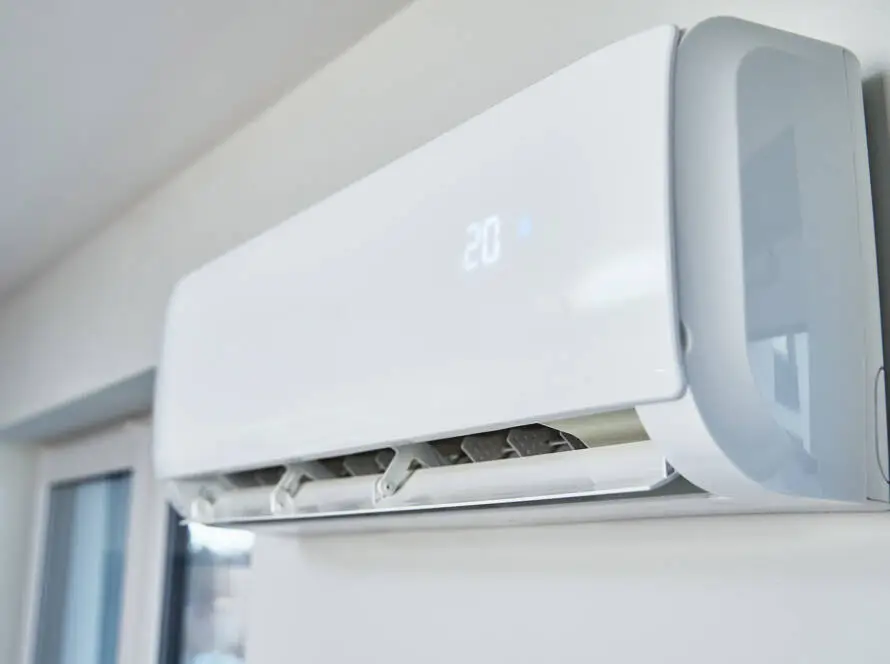A Simple Guide for Builders & Homeowners
Your HVAC(Heating, Ventilation and Air Conditioner) system is one of the most important parts of a home. For homeowners, it’s responsible not only for your comfort, but also your health, as well as the overall durability of the structure you live in.
We expect a lot of modern HVAC systems. The unit we choose for our personal comfort has to keep us warm in the winter, cool during those hot summer days, maintain low humidity levels and filter contaminants from the air we breathe. A great HVAC system does all of this so effectively and quietly that you don’t even realize it’s there as it maintains a comfortable temperature.
Working with an independent third party designer such as Shoreline Building Performance ensures all these elements are considered with your best interests in mind, independently and impartially.
Let’s compare your HVAC system to a car. You wouldn’t install a brand-new, high horsepower engine in a car with an already struggling transmission, yet far too often we see a similar scenario in our homes. If you think of your air handler or gas furnace as the engine of your HVAC system, the ductwork can be thought of as the drivetrain. These components work in tandem with one another, and should be considered as parts of a whole in order to maximize your energy savings.
A great HVAC system has 5 key elements, many of which you may not even realize are occuring: load matching, filtration, fresh air, dehumidification and proper distribution.
Proper HVAC Sizing and Load Matching
Load matching is one of the most critical aspects to creating a comfortable environment, and one of the most commonly overlooked aspects when selecting a system. When calculating the heating and cooling loads for a home using CSA F280-12, the output is the amount of btus/hr needed during the hottest and coldest conditions throughout the year. However, for the majority of the year, we are in between those conditions, do not need that same level of energy consumption and may only require a little bit of heating or cooling. Selecting variable capacity equipment, matched to the homes’ loads throughout that range of conditions, we are able to provide a much higher level of comfort without energy waste and high monthly bills.
Bigger is always better, right? Well not in the case of HVAC equipment, particularly air conditioning systems. Although it may seem a little counterintuitive initially, we actually want to be as close to the design loads as possible, with minimal additional capacity. This has benefits both in the comfort, as well as efficiency considerations, resulting in greater savings over time.
Let’s start with the efficiency side. While your equipment is ramping up to capacity and shutting down, it’s not actually providing heating or cooling. This results in additional power usage referred to as cycling losses, which can lead to higher energy usage and bigger energy bills. We’d all rather avoid that.
On the comfort side, it’s important to consider your equipment run time. The more time the equipment runs, the more even and consistent the temperatures become, resulting in optimal comfort for you and everyone in your home.
One of the best descriptions of the flaws in these oversized, overpowered systems comes from home performance guru Nate Adams, who likens the effect of oversized equipment to heating with a blowtorch and cooling with an ice bucket. When we have large single stage equipment, we receive short, harsh bursts of heating and cooling, but are often somewhere in between too warm or too cold. Using the correct size of modern variable capacity equipment provides a significant improvement in this department.
Shoreline Building Performance offers a range of energy-efficient HVAC systems, for single family homes, commercial buildings, and everything in between. No matter the square footage, we’re able to provide high-efficiency units that will let you maintain a consistent temperature.
HVAC Air Filters & The Filtration Process:
Filtration is an increasingly important aspect of what the HVAC system provides, as we spend more and more of our time indoors, particularly during the early and late years of our lives. Providing adequate filtration to filter out contaminants in an indoor environment isn’t as simple as throwing in a higher rated filter, it should be addressed during the design phase.
You may be surprised to learn, the typical 1″ filter seen in many HVAC systems is mostly protecting the equipment and doing very little for indoor air quality. Although there are quite a few different filter rating systems, the most common way we see filters rated is by their MERV rating.
MERV stands for “minimum efficiency reporting factor.” What the MERV rating tells us is how effectively a filter removes particles from the air that passes through it. The higher the MERV rating, the more particles the filter will catch. Although there still exists some debate on the topic, it’s generally agreed upon that a minimum rating of MERV 11 should be chosen, if improving indoor air quality is a consideration.
Here’s where it gets a little tricky: By increasing the number of particles we can catch, we are also increasing the resistance to the air trying to flow through that filter. Fortunately, we have a fairly easy way to get around that, by increasing the surface area. Think of how deep the pleats are on a 5” filter versus a 1” filter. With all that extra surface area, we can catch all those particles without significantly increasing the restriction.
To accommodate a larger filter without significantly restricting the airflow, a variety of factors need to be considered when designing the ductwork coming off of the air handler or furnace, but that will be covered in more depth in one of our upcoming blog posts.
Fresh Air Systems
Outdoor air may not always be fresh air, and depending on your location, keeping your windows open may not be always desirable. Whether it’s the summer heat, or wildfire air, maintaining a source of clean, filtered air is an important consideration. While good filtration may remove airborne contaminants inside the home, that same filtration system can also be used to filter outdoor air to provide fresh air for things such as keeping carbon dioxide levels manageable while we sleep at night. Fresh air is something that can be accomplished in combination with your main heating and cooling distribution, or throughout its own dedicated system of ductwork.
Shoreline Building Performance is fully certified to perform ventilation design in compliance with relevant building codes and commissioning services. We can advise on the system that will work best for your particular application and individual preferences and usage patterns.
Dehumidification: A Popular Choice
With the rise in popularity in heat pumps, homes are often using the same piece of equipment to heat and cool the home, presenting a new set of considerations when sizing equipment. While the equipment is still expected to be able to be maintained during the coldest conditions, it must now also keep occupants comfortable on the warmest days of the year. In addition to the sensible load (the load sensed by your thermostat) system designers must also account for removing humidity from the air, or what is referred to as the latent load.
To remove humidity from the air, the system must run for a minimum period of time, and proper system sizing is essential to ensure this occurs, particularly in part-load conditions. A heat pump running in cooling mode, relies on the coil inside being below the dewpoint (the temperature at which water droplets begin to condense) to remove excess humidity for the air. Failing to attain consistent system run-time can result in a cool, clammy feeling, where the sensible load has been satisfied, but the latent load has not. A great HVAC system not only brings down summer indoor temperatures, but also keeps the humidity in check.
Distribution
Lastly, distribution is a key aspect of a high-performance HVAC system. When constructing a new home, the ductwork should be considered as part of the bones of the building, no less crucial than the studs in your walls or the joists in your floor system. Once installed, the majority of a home’s ductwork is often covered up behind drywall and becomes prohibitively expensive to modify or repair at a later date.
Although your furnace or heat pump may be replaced multiple times throughout the life of the building, the ductwork is often left intact. Ductwork plays an important role in making sure the correct amount of air is delivered to where it is needed, without excessive restriction. A well-designed duct system has many benefits including significantly reducing fan energy costs, and extending the lifespan of equipment. We will do a deep dive into the various aspects of the distribution system in upcoming articles.
Optimizing Your Energy Strategy
A great HVAC system goes beyond heating and cooling a home. It should be an integral part of the home’s design plan, considering all key elements for high-performance mechanical design. Working with a qualified design professional, like Shoreline Building Performance, ensures optimal performance, energy efficiency, and long-term comfort and health. Don’t overlook the importance of a well-designed HVAC system for your home, or your monthly energy bills. Making an informed choice from the start will allow you to save money, improve comfort levels, and avoid costly repairs.
Bonus: Rebates & Tax Credits for Insulation & Heat Pumps
Several insulation rebates are available to homeowners looking to improve their energy efficiency. Through the provincial CleanBC program, homeowners in the province can access up to $5500 for insulation upgrades.
Heat pumps are becoming an increasingly popular choice for homeowners in British Columbia due to their efficiency and environmental benefits. The province offers generous rebates to encourage their adoption, such as the CleanBC Better Homes program, which provides up to $21,000 for installing qualifying air-source heat pumps. These rebates make heat pumps more affordable and help reduce greenhouse gas emissions, contributing to a more sustainable future. Additionally, FortisBC’s Dual Fuel Heating System Rebate offers up to $10,000 for combining an electric heat pump with a high-efficiency gas furnace, ensuring year-round comfort and energy savings for homeowners. By taking advantage of these programs, British Columbians can significantly enhance their homes’ energy efficiency and environmental friendliness.



